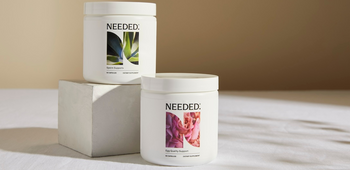What Is The Placenta? Everything You Need To Know
The placenta is an organ that develops during pregnancy, providing vital nutrients and supporting the baby’s growth through the umbilical cord. The placenta plays a critical role in pregnancy. Below, we share everything you need to know about this powerhouse organ that supports you and your baby for 40 weeks.
What is the placenta?
The placenta is a temporary organ that forms during pregnancy. It develops after conception and attaches to the uterine wall, connecting the baby to the uterus via the umbilical cord.
The placenta plays a key role in the healthy growth of the baby; here’s a breakdown of its key roles:
-
Provides oxygen and nutrients to the baby
-
Removes waste and carbon dioxide from the baby’s blood
-
Produces hormones like human chorionic gonadotropin (hCG), progesterone, and estrogen, which are essential for maintaining pregnancy.
-
Transfers immunity from mother to baby
-
Protects the baby from certain infections and maternal diseases during pregnancy
When does the placenta form?
The placenta starts to form after a fertilized egg implants in the uterine wall, about 7-10 days after conception. It starts as a small cluster of cells and grows throughout pregnancy to about one pound and 9 inches in diameter.
When does the placenta take over?
You may not realize it, but many of the unpleasant symptoms in the first trimester are due to the growth and development of the placenta. Fatigue, cramping, and even bouts of morning sickness can be chalked up to the hormones and energy necessary to create the placenta. Once formed, the placenta provides some relief during the second trimester, as it assumes hormone production around the end of the first trimester (12-14 weeks).
What is the normal position of the placenta during pregnancy?
The placenta typically attaches to the side of the uterus, most often on the top, front, or back walls. In some cases, it may develop lower in the uterus. If this happens, your healthcare provider will monitor its position closely to see if it moves higher as your pregnancy progresses and your uterus grows. When the placenta remains low and partially or fully covers the cervix, it is called placenta previa—a condition that usually requires delivery via C-section. The position of the placenta is usually confirmed during your 20-week ultrasound.
How does the placenta work in twin/multiple pregnancies?
So, do twins share a placenta? It depends. Placental structure varies based on the type of pregnancy. Fraternal twins or multiples have a separate placenta, while identical twins or multiples typically have a shared placenta. In some rare cases, if the fertilized egg splits very early in development, identical twins may develop separate placentas. An ultrasound will identify the type and location of the placenta or placentas.
Can medicines and other substances cross the placenta?
The placenta helps deliver important nutrients to your baby, but it can also permit harmful substances like alcohol, nicotine and even some drugs. That’s why during pregnancy, it’s best to avoid cigarettes, drinking, and any drug not approved by your healthcare provider. You should always consult your healthcare provider before taking any medication, even if they are over-the-counter.
What affects the health of the placenta?
The following factors can influence placental health:
-
Maternal age (quality can decline with age, especially for women over 40).
-
Premature rupture of membranes (water breaking)
-
High blood pressure or blood-clotting disorders
-
Multiple pregnancies (twins, triplets)
-
Previous uterine surgeries or placenta-related complications
-
Substance use or abdominal trauma
What are the most common conditions and concerns?
Some of the most common placental conditions are outlined below:
-
Placental abruption: when the placenta detaches prematurely from the uterus; occurs in up to 1% of pregnancies
-
Placenta previa: when the placenta covers the cervix, potentially causing bleeding or complications with delivery; occurs in about 0.5% of pregnancies
-
Placenta accreta: when the placenta attaches too deeply to the uterine wall; occurs in between 0.05% and 0.1% of pregnancies
-
Retained placenta: when some or all of the placenta remains in the uterus after birth which can lead to life-threatening bleeding; occurs in between 1% and 3% of deliveries
What are symptoms of trouble with the placenta?
Problems with the placenta are not common, but it is still important to be aware of warning signs that may indicate placental issues.
If you experience any of the following symptoms, reach out to your healthcare practitioner immediately:
-
Vaginal bleeding.
-
Stomach or back pain.
-
Uterine contractions.
What can I do to keep my placenta healthy during pregnancy?
Keeping your placenta healthy means supporting your overall health during pregnancy. The following tips can support your pregnancy as well as your placental health:
-
Attend regular prenatal appointments to monitor for complications
-
Avoid smoking, alcohol, and substance use
-
Limit caffeine
-
Engage in regular physical activity
-
Inform healthcare providers of any past placental issues or uterine surgeries
-
Take a comprehensive prenatal vitamin
What happens to the placenta after my baby is born?
The birth of your baby is actually not the end of the labor experience. After you deliver your baby, you have to deliver the placenta. This is a much simpler process than pushing out your baby. Typically the placenta loosens from the uterine wall and comes out fairly easily with the support of your OB or midwife. In some cases, Pitocin is used to help deliver the placenta. During a C-section, the placenta is removed surgically.
Can I take my placenta home with me?
Some women choose to leave their placenta at the hospital, birth center, or with their home birth midwives. Other women choose to keep their placenta and consume it as a supplement after delivery. If you choose to keep your placenta, be sure it is handled with clean hands or gloves and immediately placed in a clean container in the refrigerator or freezer.
The bottom line
The placenta is truly the unsung hero of pregnancy—working around the clock to nourish, protect, and support your growing baby. Gaining a deeper understanding of this incredible organ not only strengthens your connection to your pregnancy but also empowers you to make confident choices for your health and your baby’s development. Supporting your placenta begins with supporting your own body. A high-quality prenatal multi, like Needed’s, can help provide key nutrients such as Choline, Vitamin D3, and B12 to keep you and your pregnancy on track.














